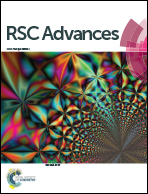Atomic structure of the La/Pt(111) and Ce/Pt(111) surfaces revealed by DFT+U calculations
Abstract
Platinum–lanthanide surface alloys have attracted great interest as promising catalysts in oxygen reduction reactions, however, our atomistic understanding of the surface structure of these systems is far from satisfactory. In this work, we investigated LnPt5/Pt(111) systems (Ln = La and Ce) employing ab initio molecular dynamics based on density functional theory with Hubbard model corrections. In the lowest energy structure, the surface layers are stacked as Pt4/LnPt2/Pt3/Pt(111) in the 2 × 2 surface unit cell, which implies a strong preference of the La and Ce atoms as subsurface layers, and hence, a full Pt monolayer is exposed to the vacuum region. Thus, the work function and d-band center of the occupied states of the topmost layer are only slightly affected by the presence of the La and Ce atoms in the subsurface layer compared with the clean Pt(111) results. In contrast, in the highest energy surface structures, LnPt2/Pt4/Pt3/Pt(111), the La and Ce atoms are exposed to the vacuum region, and hence, the work function is about 1.0 eV lower than in the clean Pt(111) surface, and the d-band center is shifted towards the Fermi level by about 0.40 eV. Although one of the Ce 4f-states is occupied and shows a localized nature, the surface structures, geometric parameters, and electronic properties are very similar for both LaPt5/Pt(111) and CePt5/Pt(111) systems.


 Please wait while we load your content...
Please wait while we load your content...